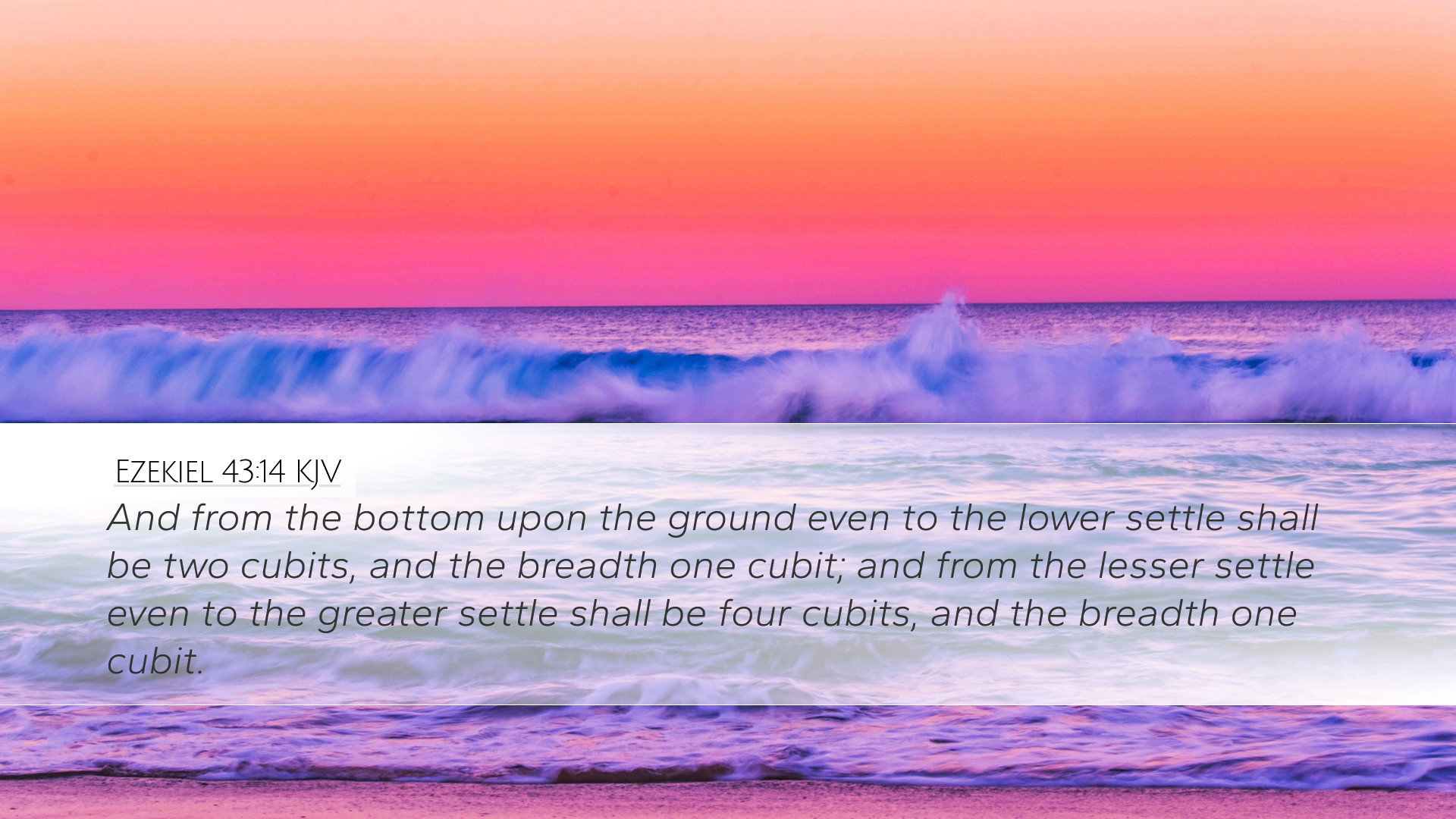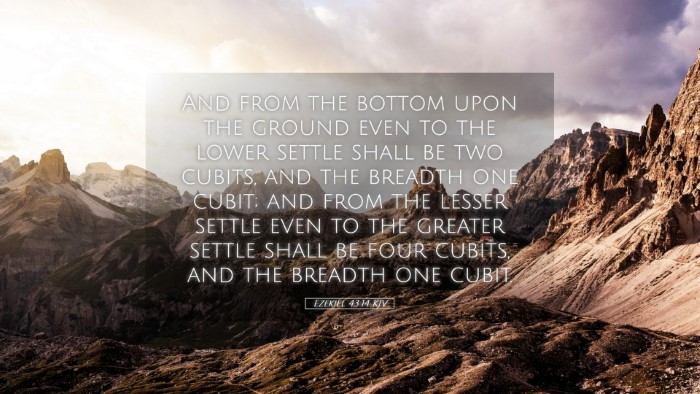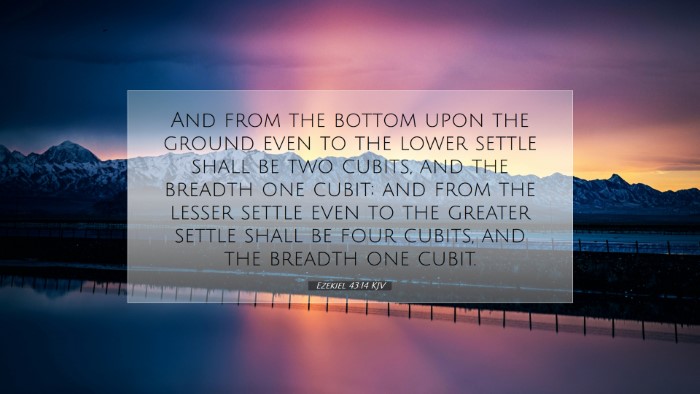Ezekiel 43:14 Commentary
Bible Verse: Ezekiel 43:14 - "And from the bottom upon the ground even to the lower settle, the measure was three cubits; and the breadth six cubits." (KJV)
Introduction
Ezekiel 43:14 is part of a larger narrative within the book of Ezekiel that addresses the vision of the new temple and God's presence among His people. This verse specifies the dimensions of certain elements of the altar, revealing the meticulous nature of the temple's design. The following commentary integrates insights from notable public domain sources to elucidate the theological and practical implications of this passage.
Contextual Background
The book of Ezekiel is both a prophetic and a literary work, emerging during a tumultuous period for Israel—marked by exile and a longing for restoration. In chapter 43, Ezekiel describes a vision of the glory of the Lord entering into the new temple, symbolizing the reestablishing of God's presence among His people. The specifics of the temple's architectural measurements, particularly in verse 14, serve not just as engineering blueprints but as theological statements about God’s holiness and the proper approach to worship.
The Altar and Its Significance
The dimensions of the altar described in Ezekiel 43:14—three cubits high and six cubits wide—suggest more than mere practicality. The specificity hints at several deeper insights:
- The Holiness of God: As Adam Clarke points out, the numbers themselves may signify the profound holiness of God. The height of the altar indicates an elevation meant to symbolize the separateness of God's nature and His requirements for holy approaching.
- Worship and Sacrifice: Matthew Henry emphasizes that the dimensions relate to the sacrificial system integral to Israel's worship. The altar is central, serving as the meeting point of the divine and the human, and the sacrifices offered there are essential to the covenant relationship between God and His people.
- Symbolism of Numbers: Albert Barnes notes the significance of numbers in Hebrew literature. The number three often symbolizes divine perfection, while six may signify human incompleteness. Thus, the altar's measurements indicate a bridge between divine holiness and human worship.
Theological Implications
The portrayal of the altar in Ezekiel 43:14 bears significant theological implications concerning worship, sacrifice, and the nature of God:
- The Call to Holiness: God's meticulous instructions around the altar invite reflection on the nature of worship. It underscores that true worship requires reverence, precision, and alignment with God's holiness as emphasized in numerous commentaries.
- Restoration and Renewal: The description of the altar signifies not just the physical structure but also a spiritual metaphor—God's willingness to reestablish covenantal relationships with His people after a period of neglect and exile. This theme resonates deeply, offering insights into the ongoing narrative of redemption found throughout Scripture.
- Revelation of God's Character: The construction details reveal aspects of God's character: He is a God of order, beauty, and sanctity, demonstrating that even in the minutiae of worship practices, God desires integrity and excellence.
Practical Applications
For pastors, theologians, and students, the insights from Ezekiel 43:14 underscore practical applications for modern worship and life:
- Consciousness of God's Presence: The emphasis on the altar's dimensions showcases the importance of recognizing God's presence in worship. It compels believers to approach worship spaces and rituals with intentionality, reflecting a deep reverence for the Lord.
- Preparation for Worship: Just as the Israelites were guided in the construction of the altar, modern worship leaders and congregants should devote themselves to preparing their hearts and spaces for worship, ensuring that they align with God's standards and character.
- The Role of Sacrifice: The altar, as a place of sacrifice, invites believers to examine their lives. It calls for personal sacrifices—such as time, resources, and pride—for the Kingdom of God, reinforcing the necessity of a sacrificial lifestyle aligned with the teachings of Christ.
Conclusion
Ezekiel 43:14, while addressing a specific architectural element of the new temple, reveals profound truths about God's holiness, the nature of worship, and the call for God’s people to restore their relationship with Him. The interplay between divine specifications and human worship obligations serves as a foundation for understanding both the Old Testament sacrificial system and its fulfillment in Christ. As pastors, students, and scholars engage with this passage, they gain rich insights for cultivating a more profound, sacrificial, and reverent approach to worship in contemporary life.


